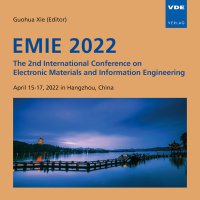Hybrids of LiMn2O4 nanoparticles anchored among carbon nanotubes as efficient cathode material for high-performance rechargeable hybrid aqueous batteries
Konferenz: EMIE 2022 - The 2nd International Conference on Electronic Materials and Information Engineering
15.04.2022 - 17.04.2022 in Hangzhou, China
Tagungsband: EMIE 2022
Seiten: 5Sprache: EnglischTyp: PDF
Autoren:
Yuan, Guanghui; Jia, Jia; Huang, Ting; Mi, Ben; Yin, Zhaozhuo (Department of Chemistry and Chemical Engineering, Ankang Research Centre of New Nano-materials Science and Technology, Ankang University, Shaanxi Ankang, China)
Wang, Zhaozhe (Huaqin Power Technology Company Limited, The National and Local Joint Engineering Research Center for Deep Processing of Vanadium Products, Shaanxi Ankang, China)
Xu, Qiong (Shaanxi Key Laboratory of Catalysis, School of Chemical & Environment Science, Shaanxi University of Technology, Hanzhong, Shaanxi, China)
Inhalt:
A binary LiMn2O4/carbon nanotubes (LMO/CNT) composite is effectively synthesized through a simplistic hydrothermal method. Morphologies, structures and the electrochemical properties of LMO/CNT hybrid as cathode material are detailed studied in rechargeable hybrid aqueous batteries (ReHABs). The about 300 nm LiMn2O4 particles with spheroid morphology are anchored among the wrinkled and twisted carbon nanotubes. The LMO/CNT electrode in ReHAB displays better rate capability and excellent cyclability than pristine LMO electrode. The reversible discharge capacities of LMO/CNT electrode in ReHAB are 128.5 mAh/g, 125.3 mAh/g, 118.1 mAh/g, 107.1 mAh/g, 92.5 mAh/g and 71.9 mAh/g at the current density of 0.2 C, 0.5 C, 1.0 C, 2.0 C, 5.0 C and 10.0 C, respectively. The strengthened electrochemical properties are profited from the energetic impacts of carbon nanotubes, which knit an interlaced electrical conductive network, insuring the ceaseless electron pathway in solid material and restraining the volumetric change of LiMn2O4 particles during the lithium ions intercalation and deintercalation.


